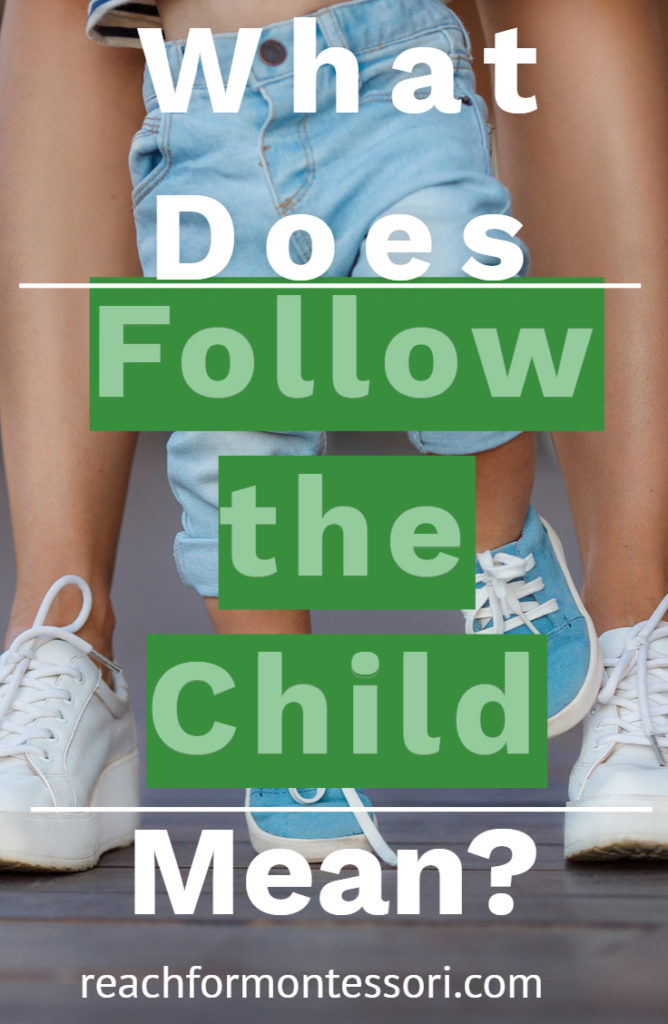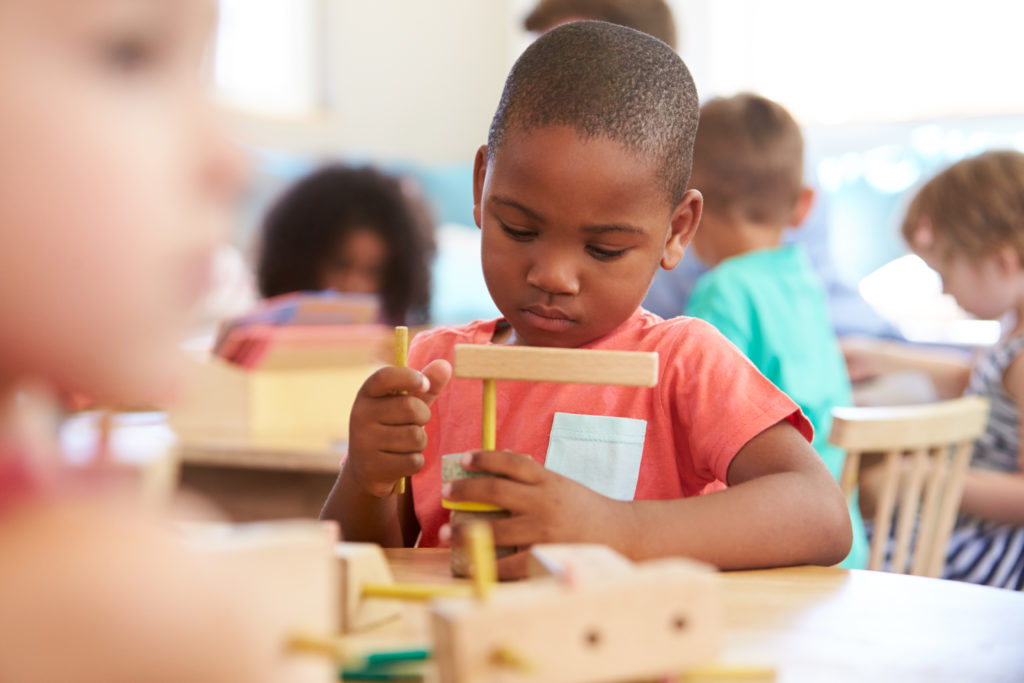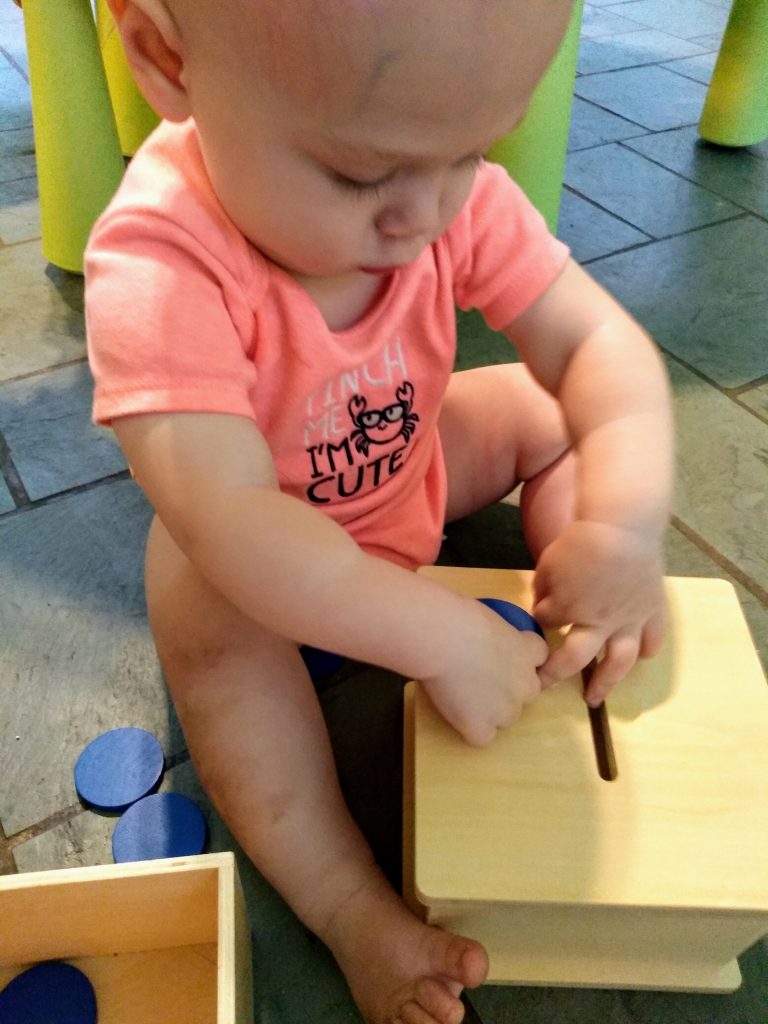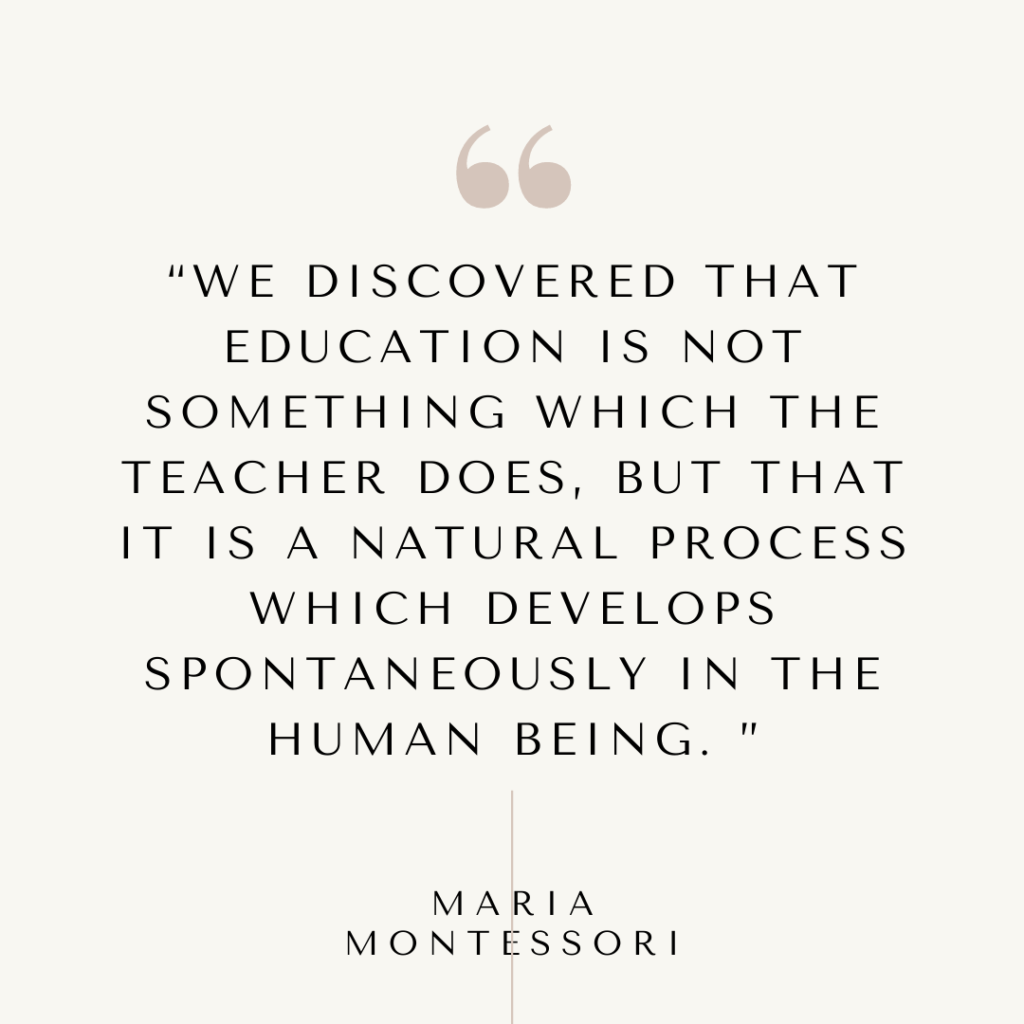You don’t have to be around a Montessori parent or teacher for long before you hear the phrase “Follow the child.”
It is a common phrase in the community because it happens to be one of the core tenets of the Montessori philosophy.
What does “Follow the Child” mean in Montessori?
Growing up, my friends and I used to play a game where we’d say the same word over and over again until it started to sound like gibberish.
We’d take any ordinary word like “cartoon,” for instance, and we’d repeat it out loud a dozen or more times.
Then, we’d collapse into collective giggling as soon as we realized what we were saying had become something meaningless.
Unfortunately, the Montessori mantra “Follow the child” stands the risk of becoming equally hollow if we’re not careful.
It’s important to understand—and remember—exactly what the principle means and how it works in a Montessori learning environment.
Let’s start at the beginning, shall we?

Origins of Follow the Child
In the early 1900s, Dr. Maria Montessori opened her first childcare center in a socioeconomically depressed part of Rome.
Her task was a daunting one: to teach a group of multi-aged children who had little prior schooling and were by all definitions unruly.
Instead of forcing activities on the children, Montessori decided to simply observe them instead.
What she discovered through her observations delighted and astounded her—the youngsters began to instinctively teach themselves!
The educator’s philosophy “Follow the child” was born.
Follow, Not Lead
You may have heard that there are two types of people in the world: leaders and followers.
The same is true in a Montessori classroom, except we turn things on their heads.
In a Montessori environment, the teachers aren’t the leaders in a child’s educational journey.
It’s the children’s job to light their own path while the caregivers follow along, doing what they can to facilitate the learning process.
That’s right–implicit in the tenet “Follow the child” is the directive to avoid leading the little ones in your care.
For many Montessorians, resisting the temptation to intervene when a child is struggling with a task is perhaps the most difficult (and most important!) part of implementing the Montessori teaching philosophy.

The Role of the Montessori Teacher
You may be wondering precisely what a Montessori teacher’s role is, then. If children teach themselves and don’t require a leader, then what is the teacher there for exactly?
Shouldn’t we just put the kids in a room by themselves and let them figure it out?
On the contrary, a trained Montessori educator is essential to the learning environment, but her role is not what one might expect.
In contrast to more traditional teachers who meticulously plan lessons and provide hand-picked instructional materials for children, the Montessori educator approaches the learning process with an open mind and an enormous amount of respect for the child’s instincts.
In Montessori, we believe that the child knows better than anyone what is needed for his or her optimal learning and development.
The child’s inner knowledge of what is necessary for learning to take place drives him or her to certain objects and experiences.
This is why Montessori children are allowed the time and space to engage in self-selected activities.
Montessori teachers do their best not to interrupt the children as they become immersed in their “work.”
Still, the role of the teacher in Montessori is much more involved than simply acting as a bystander (or babysitter, if you will).
Instead, the educator is tasked with preparing an attractive and nurturing learning environment for children, providing gentle guidance toward mastery of developmentally appropriate tasks and information, and supporting the individual child’s unique learning journey.
What Does “Follow the Child” Look Like?
Those new to Montessori are often surprised when they first walk into a Montessori classroom.
That’s because these carefully crafted environments look starkly different from a more traditional instructional space, especially at the higher grades.
Instead of a lecture-style environment where the teacher sits front and center, the children are the focal point of a Montessori learning space.
Here, you are much more likely to witness children working intently in groups or independently rather than attending to a teacher’s presentation of information.
That’s because the emphasis is on the active discovery of learning rather than the passive reception of knowledge.

Does “Follow the Child” Work?
Skeptics of this principle precept in Montessori education say it doesn’t work, but that’s likely because they haven’t tried it.
Unfortunately, many of the mainstream educational systems at work today have little respect for a child’s instincts when it comes to learning.
Traditional teachers and administrators may tell you that a child won’t learn unless compelled to through incentives or the threat of punishment.
This is far from the truth, and sadly, this misconception has resulted in so-called instructional methods and environments that stifle a child’s learning and development rather than support it.
The truth is that educational systems like Montessori that are built around the concept of “Follow the child” do, in fact, work, and it’s because they honor the truth of how learning really takes place.
This truth is crystal clear to anyone who simply watches a youngster discover something new.
Discovery, after all, is learning, and nothing brightens a child’s face more than discovering something that was previously unknown to them.
The great paradox here is that so much of learning is effortless if we just allow it to happen naturally.
I’ll end with some practical tips for implementing “Follow the child” in your own learning space:
- Wait for your child to initiate an activity or discussion. Sometimes, this means holding silence for an uncomfortable amount of time. Get comfortable with periods of silence and inactivity!
- Allow mistakes to happen. Failing is part of the learning experience. Embrace it and model learning from missteps.
- Get down on your child’s level. Close observation is the best kind and can help strengthen bonds as well.
- Join in the fun. Allow your child to lead you back to some of your own early learning experiences. This way, you can better understand and honor his or her learning journey.

How are you implementing “Follow the child” in your learning space?
What other questions do you have about this essential Montessori principle?
Cheers and don't forget to subscribe!

Allowing mistakes to happen is so important! Being a safe space for your child to grow is great advice! Great post mama!
It really is important! I’m glad you enjoyed the read!
That was a fascinating read. It made me reflect on my own parenting style and I will be trying to step back going forward to allow my son to make mistakes and learn from them (safely of course).
It can be a challenge sometimes, but it’s always a joy to see our children blossom when we step back a little!
I love this phrase! As a former public school teacher, we would use the term “student-led”, but like you mentioned, it would be used so much that it basically became meaningless. Now as someone who is planning on homeschooling my two boys, “follow the child” is already something I’m implementing! Thanks for this post!,
The concept of Montessori has always fascinated me! Is there an age where kids can’t be taught Montessori? My little guy is, well, not so little anymore. But I’m very interested in Montessori!
It’s never too late! Montessori is even used in nursing homes, believe it or not.
Great!! I had no idea about this Montessori rules. But I think it is true. If we trust on a child’s instincts, learning will be fun and interesting to him.
I agree!